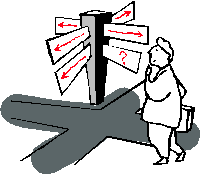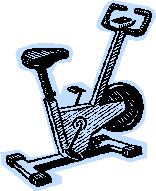Exercise: Helpful or Harmful in ALS?
By: Robert G Miller MD, Neurologist, Director Sandy McDade RPT, Physical Therapist Melody Fong, Occupational Therapist Forbes Norris ALS Research and Treatment CenterWe are all familiar with the many benefits of exercise including improved sleep, appetite, mood, digestion, and increased endorphins. At the same time “energy conservation” and minimizing fatigue is often emphasized in the treatment of ALS. People with ALS (PALS) are therefore often confused as to whether exercise is helpful or harmful for them. The answer to this question will depend on the type of exercise being performed as well as the stage of progression in each region of the body. In this article we will provide some guidelines for three types of exercise for PALS; aerobic (cardiovascular), strengthening, and range of motion (ROM). Understanding safe exercise options and principals for PALS is an important starting point. People with ALS should also work with a physical therapist, familiar with ALS, who has examined their body. This therapist will develop an exercise program and modify it, as needed, over time. A physical therapist makes certain PALS and their caregivers know how to independently and safely perform the exercises that provide the most benefit to each different part of the body.
Here are some guidelines we provide at the Forbes Norris ALS Center to patients with ALS regarding various forms of exercise.
Aerobic Exercise
Animal models of ALS have shown benefit and even prolonged survival from moderate exercise. Studies suggest that moderate aerobic exercise boosted levels of nourishing brain hormones, IGF-1(Insulin-like growth factor 1) and BDNF (Brain-derived neurotrophic factor), and reduced markers of inflammation which is thought to be an important mechanism in ALS.
For PALS who have the strength and energy for a cardiovascular exercise program, we recommend a stationary bicycle, elliptical or treadmill equipped with an ergometer to measure heart rate. The device can be ramped up to about 70-75% maximal heart rate for about 10-20 minutes, three times per week.
Moderation is key. At the conclusion of any aerobic exercise a person with ALS should rest. Following that period of relaxation though a PALS who has not overdone it will have the energy to complete his or her typical daily tasks. If exercise is reducing a person’s energy it is counterproductive and should be decreased or eliminated. Many PALS do not have the strength or energy for any cardiovascular exercise. We encourage them to focus completely on energy conservation in order to have the stamina to take part in their important and enjoyable daily activities.
Strengthening Exercise
ALS studies on strengthening exercises demonstrate that a moderate program of strengthening can increase strength but intense exercise can result in an acceleration of weakness.
Muscles that can overcome gravity and provide some resistance can be strengthened safely with moderate weight lifting (3 sets of 10 repetitions that are not too intense to complete). Muscles that are not strong enough to easily perform typical daily tasks should not be subjected to strengthening exercises. Arms, for example, that can be overworked during the performance of tasks like brushing teeth or raising utensils for eating require planned rest periods and modifications to make these tasks easier. An example of a modification would be to prop-up arms on a table or counter for eating or teeth brushing so they do not need to be lifted as high. Rest and modifications are more likely to preserve already weakened muscles than strengthening exercises.
Stretching and ROM (Range of Motion) Exercise
Range of motion and stretching are important to perform daily starting in the early stages of ALS. People with ALS often experience tight, contracted and sore muscles. Active or passive (with a partner moving the limbs) range of motion and stretching exercises help maintain joint mobility and soft tissue flexibility. These movements reduce or prevent stiffness and pain without fatiguing muscles.
Perform ROM and stretching slowly without forcing any part of the body. For in-depth instructions and guidelines on performing ROM exercises we direct you to this article “Passive and Assistive Range of Motion Exercises for Patients with ALS” by the ALS Association Oregon and SW Washington Chapter.
A modified Pilates, yoga or tai chi program, walking and aqua therapy can also provide ROM exercise. Pilates exercises combine light resistance with stretching. Some people with ALS have found working one-on-one with an experienced Pilates or yoga instructor is beneficial. Aqua therapy stimulates muscles and due to the buoyancy of the water allows weakened muscles to move easier. Walking provides not only the benefit of stimulating muscles but stimulating many bodily functions, plus providing fresh air and enjoyment of the outdoors. Patients often report positive physiological benefits from these forms of exercise too including relaxation and reduced stress.
Basic Rules of Exercise for PALS
The most important rule for people with ALS is, listen to your body. Stop when fatigue sets in rather than pushing through it. If you are sore or especially fatigued the next day, you have overdone it. Soreness indicates muscle tissue break down, a bad thing in ALS. Start any exercise program slowly and move up to the level you want to achieve gradually. Recognize there may be some days your body requires more rest than others. A physical therapist is the ideal coach as you develop and modify your own exercise program.
References:
Lopes de Almeida, Silvestre R, Pinto AC, de Carvalho M. Exercise and ALS, Neurol Sci 2012;33:9-15.
Chen A., Montes, J., Mitsumoto, H. (2008). The role of exercise in amyotrophic lateral sclerosis. Physical Medicine and Rehabilitation Clinics of North America, 19, 545-557.
Dalbello-Haas V, Florence JM, Krivickas LS. (2008) Therapeutic exercise for people with amyotrophic lateral sclerosis or motor neuron disease. Cochrane Database of Systematic Reviews 2, CD005229.
Lui, A.J., Byl N.N. (2009). A systematic review of the effect of moderate intensity exercise on function and disease progression in amyotrophic lateral sclerosis. Journal of Neurologic Physical Therapy, 33, 68-87.
Pinto, A.C., Alves, M., Nogueira, A., Evangelista, T., Carvalho, J., Coelho, A., de Carvalho, M. and Sales-Luís, M.L. Can amyotrophic lateral sclerosis patients with respiratory insufficiency exercise? Journal of Neurological Sciences 1999;169, 69-75.






Thanks so much for the exercise recommendations. My personal trainer and I have been wrestling with these questions for over two years and had settled on one session of light resistance training and one session of walking per week. I now intend to add one session of stationary cycling per week. Our rule of thumb has been “If it hurts to get up the next morning, we have probably overdone it.” Now we know that we’re on the right track.
Hello, i am looking for daily exercises for a dear friend that has been diagnosed with ALS. Any ideas for me?
Thank You
Hi,
It is important for your friend to work with a physical therapist who has experience with ALS. A daily exercise plan must be tailored to the individual. The first thing to do is find an ALS clinic in your area. The ALS Association and Muscular Dystrophy Associations in your state can help direct you to clinics offering multidisciplinary care. Here are websites to get you started. http://www.alsa.org https://www.mda.org/ Both websites provide links to help you find local care centers.
Amy Roman
hi there- i understand that traditional oral motor exercises may be counterproductive for those with als. would simple ROM and/OR gentle massage of the facial muscles be appropriate? also, any recommendations for early lip biting? thank you for your time!
Hi Melissa,
I often recommend massage followed by light stretching for my clients with trismus (reduced range of movement of the jaw) due to muscle tightness. Your speech therapist can recommend a protocol for you.
Lip and cheek biting can be a very annoying and painful problem with ALS. When someone reports this my first question is always, “When does it happen? Is it occurring when you are sleeping, eating or another time?” I also want to know what part of the lip or cheek is being bitten. In all cases I would recommend massage and stretches. I will be writing an article for AmyandpALS on this soon, but other options include dental appliances, a dental procedure to create an white synthetic bump on the tooth to hold the lip away, tooth filing to remove a sharp edge, and dietary changes to reduce chewing. A consultation with a dentist is a good place to start.
Amy
Amy, First time on your site; answers questions I have had about weight lifting and stationary bike, etc. Thanks so much
I am so glad you found this helpful. Thank you for letting me know.
Amy
I find your web site informative; thanks
This post is interesting, I very much appreciated it.
My husband was diagnosed with ALS (amyotrophic lateral sclerosis) when he was 61 years old 4 years ago. The Rilutek (riluzole) did very little to help him. The medical team did even less. His decline was rapid and devastating. His arms weakened first, then his hands and legs. Last year, a family friend told us about Rich Herbs Foundation (RHF) and their successful ALS TREATMENT, we visited their website www. richherbsfoundation. com and ordered their ALS/MND Formula, i am happy to report the treatment effectively treated and reversed his Amyotrophic Lateral Sclerosis (ALS), most of the symptoms stopped, he is able to walk and able to ride his treadmill again, he is pretty active now.
Hello Amy!
I have ALS with a bulbar onset , my biggest problem is that I can eat little by mouth, and now the problem is worst because of me butting my cheeks, I bite them when swallowing any thing even my saliva.
I have big blisters that are worsening because I keep on biting them.
What I csn do?
Docs and Dentist don’t have a solution.
Thanks!
Msrta
Appreciating the time and effort you put into your website and in depth information you offer. Nice explanation and you have pointed out some valid points exceptionally well. I will certainly dig it and personally suggest to my friends. I’m sure they’ll be benefited from this website. Thanks for sharing!